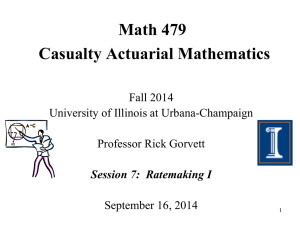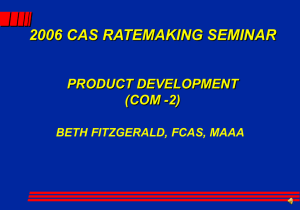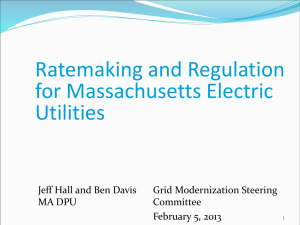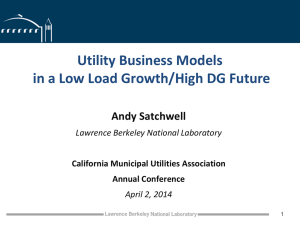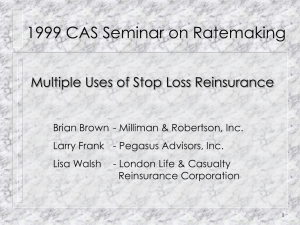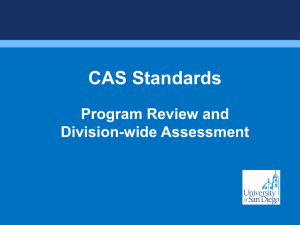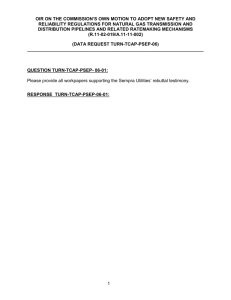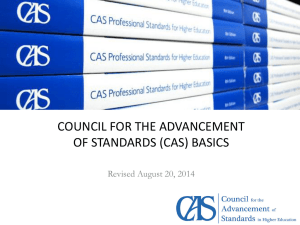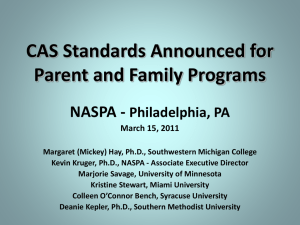Lecture Notes 8 - University of Illinois at Urbana
advertisement
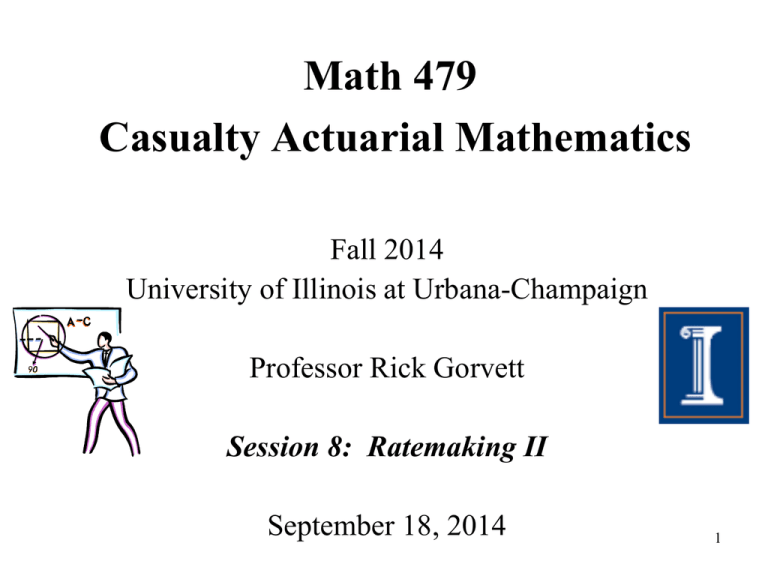
Math 479 Casualty Actuarial Mathematics Fall 2014 University of Illinois at Urbana-Champaign Professor Rick Gorvett Session 8: Ratemaking II September 18, 2014 1 Last Time • Ratemaking I – Overall concept – Two foundational techniques • Pure premium method • Loss ratio method 2 Agenda • Ratemaking II – Trend vs development – is there overlap? – Relativities – Parallelogram method 3 Loss Trend vs Loss Development 4 Relationship to Reserving • Developing losses to their projected ultimate values is a core concept • But now, we add consideration of trend • Why? – Historically, suppose that AY 2010 claims will develop for (let’s say) ten years – Suppose that for ratemaking purposes, we are estimating AY 2015 – Note: AY 2015 may also be expected to develop for ten years, but starting 5 years later 5 Loss Trend • In our example, if we use AY 2010 losses as a basis for our “what if” scenario (“what if 2010 losses are representative of what losses might occur in 2015”), we must acknowledge that, in 2015, they will occur at a cost level that applies 5 years later • Use historical patterns of losses (e.g., frequency and severity) to estimate and project loss “trend” or “inflation” 6 Trend vs Development • Is there “overlap” here? Are the trend and development processes somewhat redundant? • Answer: No. • There are two “time periods” in the ratemaking process – (1) Average accident date for the experience period, to average accident date for the future policies which will be written under the new projected rates – (2) From the occurrence period of the losses to their final ultimate values 7 Relativities 8 Ratemaking “Relativities” • Three main kinds of relativities – Classification – Territorial – Increased limits • Classification ratemaking – One class is the “base class” (relativity = 1.00) – Rates for other classes are keyed off of the base class rate • Class rate = base rate × class relativity factor – More on this in the “Risk Classification” section 9 Ratemaking “Relativities” (cont.) • Territorial ratemaking – Very similar to classification ratemaking, conceptually and procedurally • Increased limits factors – Basic limits premium or loss cost • E.g., $100,000 per occurrence limit – Calculate premiums or loss costs for higher policy limits by multiplying the basic limits value by the appropriate increased limits factor (ILF) – Often, trending and/or developing is performed on 10 a basic limits (and perhaps other limits) basis Parallelogram Technique 11 Key Concepts • Written premium: booked at policy issuance • Earned premium: applying to coverage provided • Rate changes: +/- change in rate per exposure unit • Benefit changes: change to benefits provided (possibly to in-force policies, as well as new policies) • On-level factors: bring CY EP to “current” rate level • On-level premiums: brought to “current” rate level 12 Parallelogram Method 2008 2009 1.000 1.200 +20% rate change on July 1, 2008 What is the on-level factor to bring 2008 CY EP to a 2009 rate-level basis? 13 CAS Exam 5, May 2007, # 7 14 CAS Exam 5, May 2007, # 8 15 CAS Exam 5, May 2008, # 24 16 CAS Exam 5, May 2008, # 27 17 CAS Exam 5, May 2007, # 34 18 CAS Exam 5, May 2008, # 14 19 CAS Exam 5, May 2007, # 37 20 Next Time • Ratemaking III – Exposure bases – Putting it all together 21
